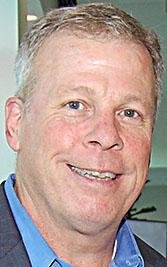Fewer Arkansans lived in poverty in 2017 than in the several years before, according to data released today by the U.S. Census Bureau.
The Census Bureau estimated that 16.4 percent, or 478,365 Arkansans, were in poverty in 2017, compared with 17.2 percent, or 499,225 people, in 2016. The proportion is still roughly 1 in 6 Arkansans, and more than 35,000 of them worked full-time for the whole year surveyed.
The state’s drop slightly outpaced the national drop from 14 percent, or 44.3 million people, to 13.4 percent, or 42.6 million people.
Nationally, 20 states and the District of Columbia experienced declining poverty, according to the Census Bureau. The poverty rate increased only in Delaware and West Virginia.
The Census Bureau also estimated income inequality using the Gini index, with 0.0 being perfect equality and 1.0 being total inequality, in which one household would have all of the income. The Gini index showed inequality of 0.4822 for the United States and 0.4725 in Arkansas, meaning Arkansas was closer to equality than the nation on average. Only five states — California, Connecticut, Florida, Louisiana and New York — as well as the District of Columbia and Puerto Rico had Gini index figures that were higher than the U.S. average.
The statistics released today show positives and negatives in Arkansas’ economy as well as the nation’s, said Mervin Jebaraj, director of the Center for Business and Economic Research at the University of Arkansas, Fayetteville.
More Arkansans have jobs now, Jebaraj said, and rising employment has lifted some Arkansans out of poverty. But wages have remained stagnant for years, he said, so higher wages are unlikely to have contributed to changes in poverty rates.
“This is more people having work, as opposed to wages necessarily increasing,” Jebaraj said.
Many familiar demographic differences remain steady.
Women, children and members of minority groups are still more impoverished than men, adults and whites, but nearly every racial, age and educational demographic has experienced drops in poverty, according to the data. The exceptions are American Indians and more educated citizens.

The Census Bureau’s figures released today are from its American Community Survey 1-Year estimates. They are the bureau’s most recent estimates but are not considered to be quite as accurate as the bureau’s five-year estimates, which collect data during five-year periods from larger sample sizes. Those statistics, which are only as recent as 2016, don’t show such dramatic changes in the state’s poverty rate, although they show a drop from 19.3 percent in 2015 to 18.8 percent in 2016 after years of increases.
The Census Bureau today also released median household income statistics showing that Arkansas’ number has gone up slightly (to $45,869 from $44,334), but its position as 48th-lowest in the nation has not changed. Because of high margins of error, the Arkansas Democrat-Gazette did not analyze sub-level data provided by the bureau that showed median household income for the state’s largest counties and for racial groups.
Jebaraj said he doesn’t expect the same drop in poverty rate in 2018, which he said has not had job growth as strong as 2014-2017 did.
“Most of 2018 so far has been not great news on the employment front, although the last two months have been decent,” he said.
For the poverty rate to continue declining, Jebaraj said, one of two things must happen: more employment opportunities or higher wages.
Arkansas has had considerable growth in manufacturing jobs, but Jebaraj said manufacturing in the state is unlikely to return to its previous prosperity from years ago. Manufacturing should maintain its strength, he said, so long as it is not harmed by retaliation to trade tariffs implemented by President Donald Trump’s administration.
“To me that kind of speaks to the fact that we’ve pursued economic policies at the state level that maybe don’t promote broadly shared economic growth,” said Bruno Showers, a senior policy analyst at Arkansas Advocates for Children and Families.
Tax cuts for corporations and high-earners were designed to create job growth and business investment, but low-earners can remain impoverished if wages don’t increase, he said.
An earned income-tax credit for lower-income individuals, which Arkansas Advocates has lobbied for, would reward low-income people and e n c o u r a g e them to work more hours, thereby potentially increasing their earnings or helping them gain promotions, Showers said.
But some conservatives have argued the tax credit is another spending program and that tax cuts are preferable.
After major tax breaks at the federal level, politicians have anticipated business investments that would ultimately allow companies to pay workers higher wages. Jebaraj said he hasn’t seen any signs of acceleration in business investments so far. Wages could be expected to increase about one or two years after significant investment, he said.
Company executives may feel uncertain economically because of the U.S.’ so-called trade wars, or small businesses may be waiting for clarity from the Internal Revenue Service on how the tax breaks affect them, Jebaraj said. Or worse, he said, business leaders may not feel optimistic that economic growth will continue.
Jay Chesshir, president and CEO of the Little Rock Regional Chamber of Commerce, said his organization did a survey of manufacturers in 2017 that showed companies some interesting figures on wages.
“One of the things that came from that survey that was surprising to a lot of manufacturers was the entry level of wages that are now common in Pulaski County have moved up,” Chesshir said.
The companies realized they needed to increase the pay for entry-level jobs to attract more workers, he said.
“If all they know is in the confines of the company or facility where they’re operating … sometimes you can be-c o m e l e s s than competitive and not even realize it,” Chesshir said.
Only three states — Mississippi, New Mexico and Louisiana, in that order — and Puerto Rico have higher percentages of full-time working poor than Arkansas.
In Arkansas in 2017, the Census Bureau estimated, 35,517 Arkansans 16 or older worked full time for the entire year but remained below the poverty line. That’s about 3.7 percent of the estimated 966,060 Arkansans who also worked full time for a year. The national median is about 2.5 percent.
Arkansans will be able to vote in November on whether to increase the state’s minimum wage. Arkansans approved the last constitutional effort to increase the minimum wage, in 2014. That raise was phased in Jan. 1, 2017, at $8.50 per hour. The federal minimum wage is $7.25 per hour.
The proposal on this year’s ballot would require $9.25 per hour by Jan. 1, 2019, $10 per hour by 2020 and $11 per hour by 2021, according to the Arkansas secretary of state’s website.
While the measure has support from Arkansas Advocates and other organizations — including the ballot committee that pushed it, Arkansas For A Fair Wage — another committee has formed to oppose it. Arkansans for a Strong Economy has sued, claiming invalid signatures were used to get the measure on the ballot. Opponents argue that wages will increase at the expense of higher prices of goods and fewer jobs.
Chesshir said that in the long run, he believes training high school students and workers who need to learn new skills is key to economic prosperity for individuals, which would eventually trickle down.
More-educated Arkansans experienced slight upticks in poverty while still having a far lower poverty rate than less-educated Arkansans, according to the latest data.
An estimated 21,659 Arkansans 25 or older who have earned bachelor’s degrees or higher were impoverished last year, about 4.6 percent of the state’s total population of such degree earners. That’s up from 4.5 percent in 2016 and 4.4 percent in 2015.
While poverty rates haven’t consistently improved for people who have education beyond high school diplomas, rates have declined for those who did not complete high school. About a quarter of people who never graduated high school or earned an equivalency degree were impoverished in 2017 (64,169 people), down from an estimated 30 percent in 2015 (84,272 people). Of those whose highest educational attainment was completing high school or earning an equivalency degree, 15.6 percent were in poverty in 2017 (103,418 people), down from 17 percent in 2015 (11,549 people).
Those figures have coincided with fewer Arkansans lacking high school diplomas or equivalency degrees, according to the data.
Other demographic characteristics correlate with poverty rates.
According to the data, the older people are, the less likely they are considered to be in poverty. The state’s least-impoverished age demographic is senior citizens — about 10.2 percent of all senior citizens, or about 48,812 people 65 or older. Children younger than 5 were the poorest — about 24.5 percent of all children younger than 5, or about 44,956 such children.
Whites had the lowest poverty rate among races at 13.3 percent. About 23.2 percent of people of Hispanic or Latino origin, about 13.5 percent of Asians, about 25.7 percent of American Indians and about 27.6 percent of black Americans were poor in 2017. A figure for Native Hawaiian and Pacific Islanders had a margin of error of 23 percent and was not considered in the newspaper’s analysis.
All racial groups experienced a decline in poverty except for American Indians, who saw an increase from 25.2 percent in 2016 to 25.7 percent in 2017. People of Hispanic or Latino origin had the biggest decline, from about 26.7 percent poverty in 2016 to 23.2 percent 2017. Poverty rates for other groups declined by similar amounts.



